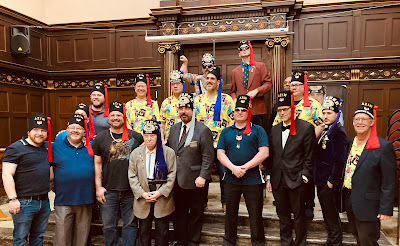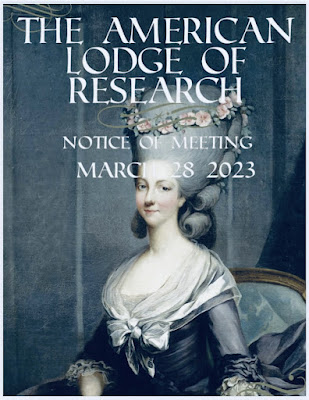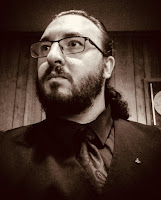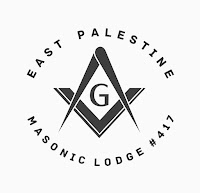 |
| Appropriately hanging outside the Colonial Room in Masonic Hall are Franklin, Washington, and Lafayette. |
That was one exceptional meeting of The American Lodge of Research we enjoyed last night! Two phenomenal research papers anchored what was a productive and memorable time together.
Attendance was up, probably because of improved communication and outreach both to our members and to those interested but haven’t joined yet—and also, I suspect, because the successes of the past two years of meetings speak for themselves.
Bro. Ziad was the first to present. His paper, with plenty of art and illustrations, is titled “The Masonic Journey of Princess Lamballe.” An engaging work of biography and history that reveals a very young lady’s entrance into the height of Parisian society (becoming a confidant of Marie Antoinette, no less) and how she parlayed her social station into Masonic membership in an Adoptive lodge, Loge la Candeur, where a demand for equality between the sexes was fomenting. La Candeur was an independent-minded force for feminine equality within the Grand Orient of France, to the point of antagonizing the Grand Orient leadership. The princess was present at this lodge’s inaugural meeting on March 21, 1775. Six years later, the women members decided they would rule and govern the lodge themselves, without male members’ direction.
 |
The Death of Princess de Lamballe
by Léon-Maxime Faivre, 1908. |
In the end, she perished in The Terror, replete with decapitation. I like to think she and her peers’ Masonic labors continue today in the feminine lodges of France and elsewhere—several of which can be found a short distance away on 45th Street.
Next at the lectern was Bro. Daniel (I redact surnames here because I don’t know if the brethren prefer privacy concerning their Masonic membership), who gave us “Superstructure: A Philological and Historical Reimagination of the Middle Chamber and Winding Staircase.” Daniel is a rabbinical student whose insights into the Hebrew language, both modern and ancient, fuel his investigation into exactly what might be meant in the lecture of the Second Degree when it discusses that inner architecture of KST.
I think we all understand no one in Israel was employing the term “Sanctum Sanctorum.” Daniel plumbs the Hebrew, Aramaic, and English (and displays Greek and Latin) uses of the terms middle, chamber, winding, and staircase to extrapolate contexts that ensure we’ll never hear that degree’s lecture in the same way again. It may be possible that the climb to the Middle Chamber is not traversed via material stairs at all but, instead, could be a mental ascendance.
During the Q&A, the Brother Junior Deacon rose to exclaim that this was the finest research presentation he’d heard in many years. He also mentioned how the Greek word thalamus—as in cerebral cortex—means “inner chamber!” I similarly think this paper exemplifies the way scholarship in Freemasonry can add powerful life to the printed words Masons are expected to memorize for recitation. (And don’t ask about my attempt to deliver the few brief lines from the Junior Warden’s station!)
Speaking of printed pages, naturally both of these papers will appear in our upcoming book of transactions; they will bloom on the page because their oral presentations, even with PowerPoint, are an awful lot to absorb. The ALR has inked a deal with Westphalia Press and, when I finally finish editing, we can start pre-press. Hopefully will have the books in June.
There was some business to tackle before closing the meeting, and it is with great pleasure The ALR announces the election of its newest Fellow—that’s No. 50—is Piers Vaughan! Congratulations, Piers! There’s no need to explain why he was chosen.
The American Lodge of Research will meet again in June for more Masonic learning and our election and installation of officers.





























